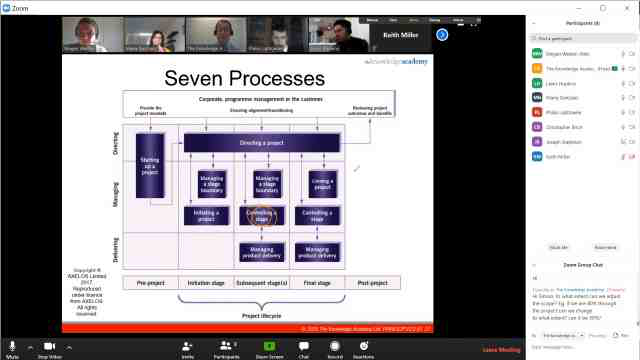Get a custom course package
We may not have any package deals available including this course. If you enquire or give us a call on +61 272026926 and speak to our training experts, we should be able to help you with your requirements.
Module 1: Introduction
Module 2: Requirements
Module 3: Test Methods
Module 4: Marking and Labelling
Module 5: Documentation Accompanying the Hydrogen Generator


This ISO 22734 Training can be a valuable tool for any professional who is involved in the design, manufacture, installation, operation, or maintenance of hydrogen and oxygen production, storage, and delivery systems. This course can benefit various professionals, including:
There are no prerequisites required for this ISO 22734 Training Course.
ISO 22734 defines the construction, safety, and performance criteria for packaged or factory-matched hydrogen gas generating machines, also known as hydrogen generators, which electrolyse water to create hydrogen and oxygen gas. It is designed for indoor and outdoor household usage in protected places such as carports, garages, utility rooms, and similar areas of a residence
Understanding ISO 22734 is crucial for professionals in the hydrogen generation industry, especially Engineers, Technicians, and Safety Personnel. Mastery of this standard is essential as it delineates safety protocols, construction criteria, and performance standards for hydrogen gas-generating machines. Individuals aiming to work in the field of hydrogen generation must grasp ISO 22734 to ensure the safe operation, compliance, and efficient functioning of these machines.
This 1-day Training by the Knowledge Academy offers practical insights into applying ISO 22734 standards effectively. Delegates will gain hands-on experience in utilising electrochemical reactions for hydrogen production. This Training Course covers various topics, from the fundamental introduction to the intricate details of risk management, mechanical equipment, and safety protocols.
Course Objectives:
To prioritise the protection of service personnel and execute routine testing proceduresUpon completing this Training Course, delegates will be able to understand the specific requirements for permanently connected hydrogen generators. They will also be able to use electrochemical reactions to produce more hydrogen.




To achieve the ISO 22734 Training, candidates will need to sit for an examination. The exam format is as follows:


Why choose us
Experience live, interactive learning from home with The Knowledge Academy's Online Instructor-led ISO 22734 Training. Engage directly with expert instructors, mirroring the classroom schedule for a comprehensive learning journey. Enjoy the convenience of virtual learning without compromising on the quality of interaction.





Unlock your potential with The Knowledge Academy's ISO 22734 Training, accessible anytime, anywhere on any device. Enjoy 90 days of online course access, extendable upon request, and benefit from the support of our expert trainers. Elevate your skills at your own pace with our Online Self-paced sessions.





Experience the most sought-after learning style with The Knowledge Academy's ISO 22734 Training. Available in 490+ locations across 190+ countries, our hand-picked Classroom venues offer an invaluable human touch. Immerse yourself in a comprehensive, interactive experience with our expert-led ISO 22734 Training sessions.

Boost your skills with our expert trainers, boasting 10+ years of real-world experience, ensuring an engaging and informative training experience

We only use the highest standard of learning facilities to make sure your experience is as comfortable and distraction-free as possible

Our Classroom courses with limited class sizes foster discussions and provide a personalised, interactive learning environment

Achieve certification without breaking the bank. Find a lower price elsewhere? We'll match it to guarantee you the best value
Streamline large-scale training requirements with The Knowledge Academy’s In-house/Onsite ISO 22734 Training at your business premises. Experience expert-led classroom learning from the comfort of your workplace and engage professional development.

Leverage benefits offered from a certification that fits your unique business or project needs

Cut unnecessary costs and focus your entire budget on what really matters, the training.

Our ISO 22734 Training offers a unique chance for your team to bond and engage in discussions, enriching the learning experience beyond traditional classroom settings

The course know-how will help you track and evaluate your employees' progression and performance with relative ease


You won't find better value in the marketplace. If you do find a lower price, we will beat it.

Flexible delivery methods are available depending on your learning style.

Resources are included for a comprehensive learning experience.




"Really good course and well organised. Trainer was great with a sense of humour - his experience allowed a free flowing course, structured to help you gain as much information & relevant experience whilst helping prepare you for the exam"
Joshua Davies, Thames Water



 Back to course information
Back to course information
We may not have any package deals available including this course. If you enquire or give us a call on +61 272026926 and speak to our training experts, we should be able to help you with your requirements.
 If you miss out, enquire to get yourself on the waiting list for the next day!
If you miss out, enquire to get yourself on the waiting list for the next day!

close


Press esc to close

close
Fill out your contact details below and our training experts will be in touch.



Back to Course Information